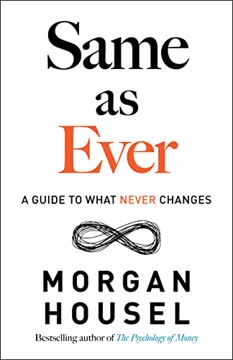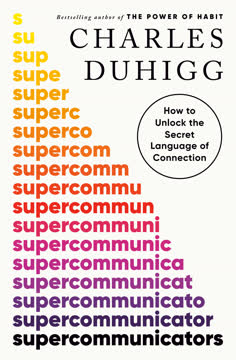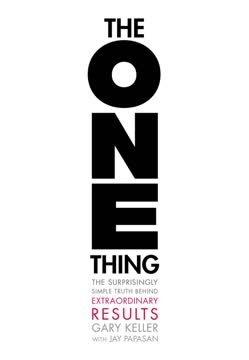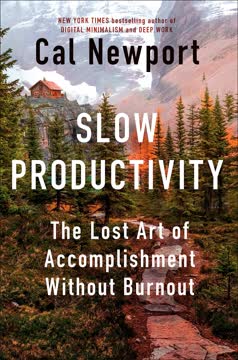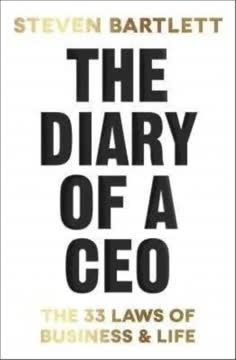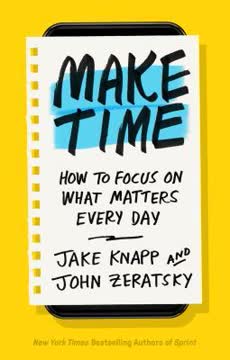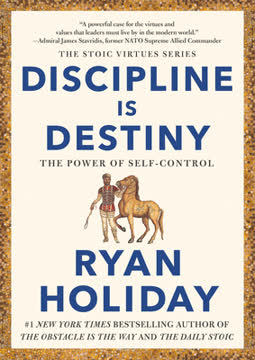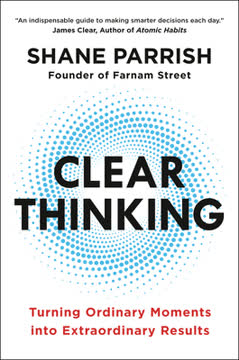重点摘要
1. 有意识地管理注意力以提升生产力和创造力
注意力是你过上高效、充实生活的最强大工具。
注意力是有限的。 我们的大脑每秒只能处理约40比特的信息,而我们每秒接收到的信息量高达1100万比特。这种有限的注意力空间对生产力和创造力至关重要。通过有意识地管理我们的注意力,我们可以更深入地专注于重要任务(超专注)并让我们的思维有意地漫游(散焦)。
有意识的注意力管理 带来:
- 提高生产力
- 增强创造力
- 思维更清晰
- 更加投入工作和生活
- 更有意义的体验
- 减少压力和不知所措
提高注意力管理的方法:
- 为任务设定明确的意图
- 主动消除干扰
- 练习元意识(注意你的注意力在哪里)
- 在深度专注和有意的思维漫游之间交替
2. 超专注:一次专注于一个重要任务
当你超专注于一个任务时,你会扩展一个任务、项目或其他注意力对象,使其完全填满你的注意力空间。
超专注提升生产力。 通过集中精力于一个重要任务,你可以在更短的时间内完成更多工作。这种深度专注状态使你能够更高效、更有效地工作,尤其是在复杂或创造性任务上。
进入超专注状态的方法:
- 选择一个重要任务
- 消除干扰
- 完全专注于所选任务
- 当注意力分散时,持续将其拉回
超专注的好处包括:
- 提高工作质量
- 更快完成任务
- 更深入的学习和理解
- 增强解决问题的能力
- 更强的成就感
3. 驯服干扰以增强专注力和生产力
干扰在成为诱惑之前处理起来要容易得多。
主动管理干扰。 我们的大脑天生喜欢新奇事物,使干扰特别诱人。通过在干扰发生之前消除潜在干扰,我们可以更轻松地保持专注并延长专注时间。
驯服干扰的策略:
- 创建无干扰模式(例如,屏蔽网站,静音通知)
- 将手机放在视线之外或另一个房间
- 使用降噪耳机
- 设定特定时间检查电子邮件和社交媒体
- 简化你的物理和数字环境
记住:每次你抵制干扰,你都在训练大脑更好地专注。
4. 散焦:有意地让思维漫游以激发创造力
散焦是你大脑最具创造力的模式。
有意的思维漫游。 虽然超专注对生产力至关重要,但散焦对创造力、解决问题和未来规划同样重要。通过有意地让思维漫游,你为新的连接和洞察的出现创造了空间。
三种散焦模式:
- 捕捉模式:让思维自由流动并记录下来
- 问题处理模式:在脑海中松散地持有一个问题,同时让思维漫游
- 习惯模式:从事简单任务,同时让思维漫游
散焦的好处:
- 增强创造力和解决问题的能力
- 更好的未来规划
- 提高自我意识
- 改善情绪处理
- 恢复心理能量
5. 设定强有力的意图以专注于最重要的事情
意图应始终先于注意力——事实上,这两个概念完美搭配。
有意识的任务选择。 通过设定明确的意图,你更有可能专注于重要任务,而不是陷入琐事或干扰。
设定强有力意图的技巧:
- 使用“三条规则”:每天选择三个主要任务
- 确定最重要的任务
- 创建实施意图(具体的何时-那么计划)
- 在高能量时段安排重要任务
强有力意图的好处:
- 在有意义的工作上提高生产力
- 减少拖延
- 更强的目标感和成就感
- 更好地将日常行动与长期目标对齐
6. 通过正念和冥想扩展注意力空间
冥想很简单——找个地方坐下,闭上眼睛,注意你的呼吸。
心理容量建设。 定期的正念和冥想练习可以增加你的工作记忆容量,使你能够同时持有和处理更多信息。这种扩展的注意力空间增强了专注力和创造力。
扩展注意力空间的好处:
- 提高专注于复杂任务的能力
- 增强创造力和解决问题的能力
- 减少专注工作时的思维漫游
- 提高元意识(注意你的思维)
- 更好的情绪调节
从每天几分钟的冥想开始,专注于你的呼吸。随着练习的进行,你会发现更容易保持专注并注意到思维的漫游。
7. 通过战略性休息恢复注意力
我们越频繁地散焦以补充心理能量,我们就越有能量应对最重要的任务。
有意识的休息。 定期休息对于在一天中保持高水平的专注力和生产力至关重要。战略性休息让你的大脑恢复活力,甚至可以激发创造力。
有效休息的指南:
- 至少每90分钟休息一次
- 每小时工作约15分钟的休息时间
- 选择低耗且愉快的活动
- 休息时断开与工作相关的思维
有效的休息活动:
- 散步,尤其是在自然环境中
- 听音乐
- 冥想
- 从事创造性爱好
- 进行有意义的对话
记住:你越忙,定期休息就越重要。
8. 收集和连接有价值的信息“点”
我们就是我们所消费的内容。
有意识的信息消费。 你摄取的信息质量直接影响你创造性连接和解决问题的能力。通过有意识地寻找有价值的信息“点”,你可以增强你的心理图书馆以备将来使用。
要消费的信息类型:
- 有用的:可操作的,与目标相关的,具有持久价值的
- 平衡的:既有用又有趣的(例如,写得好的非小说类书籍)
- 娱乐性的:有趣但不太实用的(谨慎使用)
收集有价值信息点的策略:
- 广泛阅读,尤其是你专业领域之外的内容
- 进行有意义的对话
- 参加课程或研讨会
- 接触多样化的经验和观点
记住:你的创造力受限于你收集的信息。扩展你的心理图书馆以增强你的创造潜力。
9. 根据能量水平工作以实现最佳表现
当你将精力充沛的时刻用于最复杂、最有意义的任务时,你的生产力最高。
能量对齐的生产力。 我们的能量水平在一天中波动,影响我们的专注力和创造力。通过将任务与自然能量节奏对齐,你可以优化生产力和创造力。
能量对齐工作的策略:
- 确定你的生物黄金时间(BPT)以进行专注工作
- 在BPT期间安排复杂、高优先级的任务
- 在低能量时段进行创造性任务(创造黄金时间)
- 注意到能量下降时休息
记住:顺应自然能量节奏工作可以让你以更少的努力和压力完成更多工作。
10. 投资于幸福以增强专注力和创造力
幸福是我们放在注意力空间之上的玫瑰色镜片,使我们能够以更高效和创造性的方式与体验相关联。
积极的生产力。 积极的情绪扩展你的注意力空间,使你更容易深度专注和创造性思考。通过有意识地培养幸福感,你可以增强生产力和整体幸福感。
科学支持的提升幸福感的策略:
- 练习感恩(例如,每天列出三件你感激的事情)
- 定期进行体育锻炼
- 投入时间于有意义的关系
- 冥想或练习正念
- 进行随机的善举
幸福对生产力和创造力的好处:
- 扩展注意力空间
- 增强克服挑战的能力
- 提高解决问题的技能
- 改善记忆回忆
- 在面对挫折时更具韧性
记住:投资于你的幸福不仅对你的幸福感有益——它也是一个强大的生产力工具。
最后更新日期:
FAQ
What's Hyperfocus: How to Manage Your Attention in a World of Distraction about?
- Focus on Attention Management: The book by Chris Bailey explores managing attention amidst distractions, emphasizing that productivity is more about attention management than time management.
- Two Modes of Focus: It introduces hyperfocus for intense concentration and scatterfocus for creative thinking, both essential for productivity and creativity.
- Practical Strategies: Bailey offers actionable strategies to cultivate hyperfocus and minimize distractions, aiding in accomplishing meaningful work.
Why should I read Hyperfocus by Chris Bailey?
- Combat Distraction: The book provides practical solutions to regain control over your attention, crucial in today's distraction-filled world.
- Research-Based Insights: Grounded in scientific research, it combines theory with practical advice, making it a credible resource for improving focus.
- Enhance Productivity: Effective attention management can significantly boost productivity and satisfaction in both work and personal life.
What are the key takeaways of Hyperfocus?
- Attention is Limited: Our attention is finite, capable of focusing on about 40 bits of information at once, highlighting the need for effective focus management.
- Intentional Focus: Setting clear intentions, like using the Rule of 3, helps prioritize tasks and direct attention to what truly matters.
- Tame Distractions: Strategies for a distraction-free environment, such as using apps and managing notifications, are crucial for maintaining focus.
What is hyperfocus, according to Hyperfocus?
- Deep Concentration: Hyperfocus is intense concentration on a single task, filling your attentional space and enhancing productivity and creativity.
- Deliberate Attention Management: Achieving hyperfocus involves choosing important tasks, eliminating distractions, and maintaining focus for a fulfilling work experience.
- Benefits of Hyperfocus: It allows accomplishing more in less time, increases work satisfaction, and reduces stress compared to multitasking.
How can I practice hyperfocus as suggested in Hyperfocus?
- Set Clear Intentions: Choose a specific, meaningful task to focus on, setting the stage for hyperfocus and effective attention direction.
- Eliminate Distractions: Create a distraction-free environment by turning off notifications and using distraction-blocking apps to minimize interruptions.
- Use Timers: Work on tasks for predetermined periods without interruption, creating urgency and encouraging sustained focus.
What is scatterfocus, and how does it relate to hyperfocus in Hyperfocus?
- Creative Thinking Mode: Scatterfocus involves letting your mind wander, essential for creativity and problem-solving.
- Balance Between Modes: Both hyperfocus and scatterfocus are necessary for optimal productivity, with hyperfocus for deep work and scatterfocus for innovation.
- Encouraging Mind Wandering: Engaging in scatterfocus can lead to breakthroughs, allowing the brain to process information less structuredly.
How can I incorporate scatterfocus into my routine as per Hyperfocus?
- Engage in Habitual Tasks: Perform simple tasks like walking or cleaning, allowing your mind to wander and create mental space for scatterfocus.
- Schedule Mind-Wandering Time: Set aside time for mind-wandering, letting thoughts flow without specific goals to foster creativity.
- Capture Ideas: Keep a notepad handy to jot down insights during scatterfocus sessions, retaining valuable thoughts that emerge.
What are some practical strategies from Hyperfocus to minimize distractions?
- Distraction Lists: Jot down thoughts or tasks that arise while focusing, acknowledging distractions without derailing attention.
- Mind Your Environment: Modify your workspace to reduce distractions, like keeping your phone away or using noise-canceling headphones.
- Set Boundaries: Establish specific times for checking emails and messages, maintaining focus on primary tasks.
What are the four types of tasks discussed in Hyperfocus?
- Necessary Work: Productive but unattractive tasks like meetings, requiring effort to engage with.
- Purposeful Work: Productive and attractive tasks like writing or mentoring, providing satisfaction and impact.
- Unnecessary Work: Neither productive nor attractive tasks, often serving as procrastination.
- Distracting Work: Attractive but unproductive tasks like social media, consuming time without meaningful results.
What are some effective methods to improve my attention as suggested in Hyperfocus?
- Meditation: Enhances working memory and attention span, training the brain to focus on a single object.
- Mindfulness: Increases awareness of thoughts and surroundings, reducing mind-wandering and improving task focus.
- Regular Reflection: Assess what occupies your attentional space, adjusting focus to maintain clarity and intention.
What are the best quotes from Hyperfocus and what do they mean?
- "Attention is your most valuable asset.": Emphasizes managing attention effectively, impacting productivity and life quality.
- "We are what we pay attention to.": Highlights that experiences and outcomes are shaped by focus, leading to a fulfilling life.
- "Your focus determines your reality.": Suggests that directing attention shapes perceptions and experiences, creating a satisfying reality.
How does Hyperfocus suggest managing distractions?
- Identify Common Distractions: Recognize and minimize common distractions, using apps or setting specific times for emails.
- Create a Focus Ritual: Establish routines or environments signaling the brain to concentrate, preparing for deep work.
- Practice Mindfulness: Increases awareness of distractions, allowing effective redirection of attention back to tasks.
评论
读者普遍称赞《超级专注》提供了实用的注意力管理和提高生产力的建议。许多人认为超级专注和散漫专注的概念令人耳目一新,欣赏集中工作与创造性思维漫游之间的平衡。尽管一些批评者认为书中重复了常见的生产力建议,但大多数读者认为贝利基于科学的方法和易于实施的策略具有价值。由作者本人朗读的有声书也备受好评。
Similar Books
